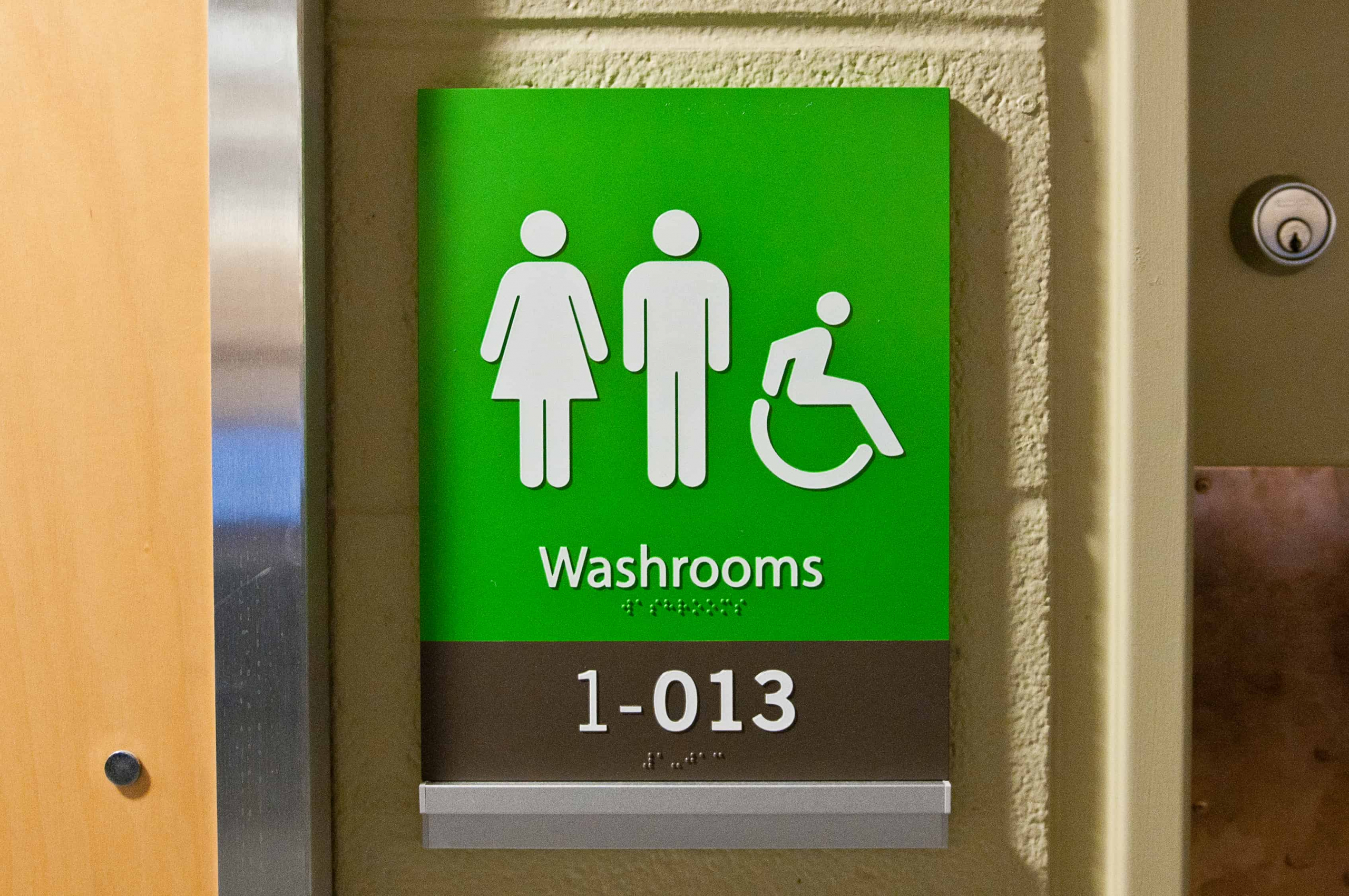Washrooms are funny things. Of course, they are an essential element of our human infrastructure; it’s difficult to imagine how we would go about our daily business (pun intended) without them being readily available throughout the day. We mostly take washrooms for granted, including the gendered manner in which they are usually structured: the little woman symbol, the little man symbol, and of course, if we see just one of these two, then we’ll expect to see the other somewhere nearby. It’s all very neat, orderly, and naturally intuitive — at least on the surface.
However, looking a bit more closely, we might notice that things don’t always perfectly fit this — I would argue — simplistic picture. For one, there is the question of gender identity: walking into either gendered washroom compels us to announce, “I am a woman” or “I am a man,” but there may be individuals for whom this question is not so simple. This may include trans, intersex, or other gender non-conforming people. Further, there is the question of gender parity: given this binary idealization of gender, is one gender grouping prioritized over another in a given circumstance? Although we are approaching this issue through the lens of gender, further questions naturally arise relating to parenting or supporting people with mobility needs. I will address these perspectives, along with the gender identity question, in a separate piece.
For the present, let us address the gender parity issue. I happen to work on the fourth floor of the University of Toronto Chemistry Department. By the elevators on this floor (near my office), there is a men’s washroom on the immediate left and a women’s washroom on the right, a bit further down the hall. However, in my first few months working here I noticed that on about half the floors there is only a men’s with no complementary women’s washroom. Later, I discovered this is actually the result of a specific University policy coming out of the Office of Space Management.
Section 1.5 of a 2009 document entitled “Design Criteria for Classrooms” explicitly states, “The proportion of male to female fixtures [washrooms] will reflect the proportion of the anticipated users, if known.” In other words, in traditionally female-dominated fields (humanities, social sciences), there will be a greater number of women’s washrooms and in male-dominated fields (such as chemistry), there will be a greater number of men’s washrooms.
In practical terms, the demographics in the hard sciences are indeed presently skewed towards the male population. However, I notice that during the semester when the halls are filled with undergraduates, it’s more difficult to notice the disparity. Only during class breaks does the gap become more apparent (i.e., at the graduate and faculty levels).
Let us imagine an undergraduate woman considering a career in math or science. She notices that while her class is mostly gender-balanced, most of her professors are men (and I assure you, a few of them will occasionally make sexist remarks). Further, she notices that she and her female colleagues spend more time looking around for a washroom than her male colleagues, with longer waiting periods once she finds it. What message does this convey?
It’s ironic to think we have numerous programs and awards specifically intended to invite women into the sciences in order to redress the gender imbalance. Yet this seems discordant with the fact that male dominance is literally etched into the structure of the building. For this reason, I strongly believe that these design standards should be removed, and eventually, gender balance should be obtained in all departments. Note that other campuses are already taking steps in this direction.
I believe that our university should act as a model for the wider Toronto community. If our campus is meant to show the way forward, why do we build it in opposition to our own ideals? We should build the university we want, not simply rebuild the one we found.


